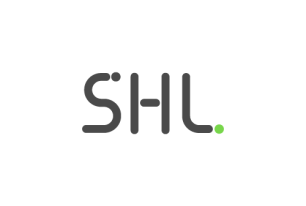Know Your Talent Management Lingo
Talent development and talent management practices are constantly evolving in the modern workplace – keep up with the latest buzzwords being used.
Share
The modern workplace has experienced massive shifts in the ways that organizations manage and develop talent. Social media is being filled with buzzwords as people share their ideas and insights on the modern ways of working. Social media platforms are further giving employees opportunities to explore and discuss these ideas, get peer opinions and share their sentiments and experiences. This is placing pressure on organizations to align with modern talent management practices, as employees—especially the highly talented ones—are expecting more from their places of work.
While these buzzwords may appear new, many of these practices have been around for some time but now, with catchy new names. Here are some of those terms.
Career Cushioning
The pandemic gave everyone a big scare in terms of their employability and having back-up plans in place. Many employees are opting for side hustles or taking on extra responsibilities and learning new skills to ensure that they are employable, financially stable, and relevant for when something unpredictable happens in the place of work. In essence, career cushioning involves being proactive and strategic in managing one's career by staying ahead of industry trends, having multiple streams of income, consistently developing new skills, managing one’s professional brand, and cultivating a strong
professional network. Organizations need to ensure that their talent remains upskilled, relevant, and have a sense of security in their jobs and careers.
Quiet Hiring
We’ve all heard of quiet quitting, but what is quiet hiring? Quiet hiring, also known as quiet recruitment or silent hiring, refers to the practice of filling job vacancies or hiring new employees without publicizing the job opening through traditional means like job postings, advertisements, or external recruitment agencies. Instead, quiet hiring is done in a more discreet or confidential manner. This approach is typically used for various reasons such as reducing application volume, poaching talent, maintaining competitive advantage and protecting confidential positions.
Workcation
The pandemic has certainly propelled employees’ needs to have more autonomy over where they work—even to the extent that this is a key consideration that many talented individuals have before choosing an employer. A workcation allows people to continue working remotely while enjoying a change of scenery and relaxation in a different location, such as a vacation destination or a remote setting. Organizations face the challenge of aligning their Employee Value Proposition to the needs of an increasingly more autonomous workforce.
The Collarless Worker
We are seeing a shift in terms of how employees define their employment and loyalty to a single organization. Studies1 predict that more collarless workers will come to the fore in the next 10 years. The collarless worker is typically a knowledge worker who sells their skills to several organizations and often at the same time. The collarless worker as a highly adaptable and flexible employee who partners with technology to deliver unique knowledge-based virtual products and services to multiple organizations. Organizations will face the challenge of ensuring that these types of workers show organizational citizenship behavior during the, sometimes, short periods that they spend with them.
Holacracy
Holacracy is intended to address some of the shortcomings of traditional hierarchical organizational structures, which can be slow to adapt and less responsive to change. Instead of traditional job titles and hierarchical structures, holacracy organizes work around specific roles and circles (teams or departments). Each role has a defined purpose and accountabilities. Holacracy emphasizes the work to be done and the roles required, rather than the individuals in those roles. This can help separate personal dynamics from work-related issues. Organizations that adopt this modern structure need to be creative about building meaningful career pathways for their employees.
Just-in-time Learning
Just-in-time learning refers to the concept of acquiring knowledge and skills precisely when they are needed, rather than through traditional methods of learning that involve a more structured and formal approach. The idea is to provide individuals with the information and training necessary to perform a specific task or address a particular challenge at the moment it becomes relevant. This results in talent development departments needing to be more flexible, responsive, proactive, and up to date in the types of learning opportunities that they provide.
Unretirement
Unretirement, the phenomenon of returning to work after formal retirement, is a growing trend among people from many walks of life, for multiple reasons. We have seen a significant amount of 50–65-year-olds returning to work after retirement. The so called “great resignation” has resulted in several positions being vacant with employers reaching out to retired employees to come and fill the gaps. Studies2 found two main reasons why mature workers unretire: financial needs and personal fulfilment. Organizations face the challenge of supporting the needs of multiple generations within a single workplace, but also ensuring that the individuals who do unretire feel supported, valued, and engaged when they return to work.
Here are some more interesting talent terms that you can go research: glass cliff; labor hoarding; talent debt; the big stay; productivity theatre; perk-cession.
Interested in learning more about what talent management practices are coming to the forefront?
Download the '2024 Talent Outlook' eBook to learn SHL’s seven predictions that Talent Management professionals should focus on in this year.
¹Bester, M. S., & Bester, L. M. (2021). Coping strategies for a collarless workforce: an employee experience guide. In Agile Coping in the Digital Workplace: Emerging Issues for Research and Practice (pp. 205-229). Cham: Springer International Publishing.
²Platts, L. G., Corna, L. M., Worts, D., McDonough, P., Price, D., & Glaser, K. (2019). Returns to work after retirement: a prospective study of unretirement in the United Kingdom. Ageing & Society, 39(3), 439-464.









